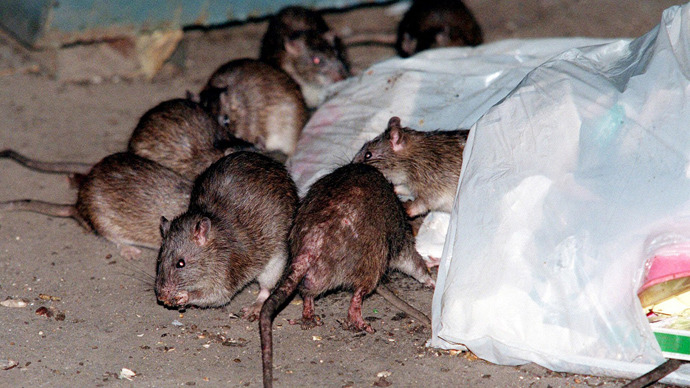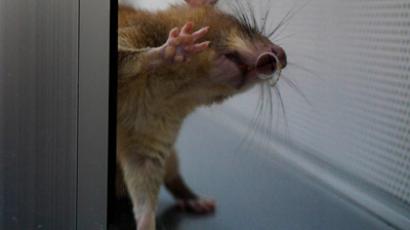Desperate New York City authorities to sterilize rats

Gotham authorities are testing a new weapon against the city’s famously tenacious rats – a poison that brings on menopause in females. Now, researchers must decide what morsel to combine the chemical with in order to tempt the animals to eat it.
"Our product is not designed to eradicate any species. That's a human error that needs to not be repeated,” said Dr. Loretta Mayer, co-founder of SenesTech, the company that developed the chemical compound.
"It's a very natural thing. We're just accelerating it in these animals."
Female rats can produce up to 12 pups a litter, and will give birth as many as five times during their life cycles. The sterilization compound, dubbed ContraPest, targets the ovarian follicles and renders the pests sterile within five to ten days of ingestion.
Thomas Lamb, chief of innovation and technology for New York City Transit, says the new approach is a result of the futility of the current methods used to combat the city’s estimated population of several hundred thousand rodents.
"We basically bait, trap and kill. If we just continue to do
that, every year we'll have the same expense and the same
result," he said.
Under the current methods, the city has to poison more rats than are born, but even if it succeeds in doing so, the problem is rarely solved. The surviving rats are then left with a food surplus, and produce large litters that quickly rebuild the population.
And in the unlikely scenario that all the rats would be killed, other animals from neighboring regions would quickly swoop in.
The point of the plan currently in place is to create a constant, but smaller population of older and quieter rats through lower birth rates.
Now, the problem is to get the animals to eat the poison.
The rodents have highly developed taste, and can detect as little of two parts per million of poison in their food.
"Rats in Laos, they like coconut. But the rats in Indonesia prefer fish flavor," said Mayer, whose product has already been used in rural areas around the world. "You have to be very much one with the animal."
SenesTech has been given a grant of over $1 million by the National Institutes of Health to find the perfect bait.
Dr. Robert Corrigan, a prominent rodentologist, told the Wall Street Journal that variations in taste are determined by what the rats usually have in their diets.
"Rats that grow up, say, from the dumpster behind a fast food chicken place, will love chicken. Bagel place, bagels. And so on."
The bait will be flavored with different tastes and smells, potentially as varied as donuts, cookies or ham. Each one will contain a dye that can be detected in rats’ whiskers in a post-mortem, so that scientists can see which flavor they preferred.
"We really won't know what works until we get in there," said Mayer.
She added that if the generic bait is not successful, the poison may have to be placed inside discarded pepperoni slices. But despite such tempting packages for the poison, Mayer stressed that eating the bait would have no consequences for humans.
“Well, it’s quite sweet, quite salty and there’s a lot of
fat. Anyone who tried it would probably gain weight from the
fat,” she said.














